Hello!
From experience I can say that very often the cause of problems when working and connecting to Wi-Fi networks is not the router (router), but the wireless network adapter(with the help of which your computer/laptop actually connects to the Wi-Fi router).
All modern laptops have a built-in network adapter; on desktop PCs, such an adapter is usually purchased separately (often a small antenna is simply connected to one of the USB ports - this is the adapter :)). In general, there are usually no problems with this piece of hardware (wireless adapter) (the piece of hardware either works or doesn’t), but with the drivers for them there are a lot of questions, and it is because of them that problems with connecting to Wi-Fi networks are often observed. Fi.
In this article, I will analyze the most basic driver setup tasks (removal, installation, update) that you encounter when connecting laptops/PCs to Wi-Fi. So...
Do you have a driver for a Wi-Fi adapter on your computer?
Perhaps this is the first question that you have to face when you have problems connecting to Wi-Fi networks. In general, when installing a new Windows 10 (8) OS - drivers for Wi-Fi adapter, most often installed automatically (although they do not always allow you to use all the options of the device - but that’s another question). When working with Windows 7 - driver for wireless adapter often is not installed, and it must be installed additionally from the disk (the website of the manufacturer of your adapter).
To find out for sure whether there is a driver for your device- open device Manager. To do this, open control Panel, then change the view to "Large icons", and select dispatcher on the list.
Note: In Windows 10, by the way, you can click right click mouse on START, and in the appeared context menu select "Device Manager".
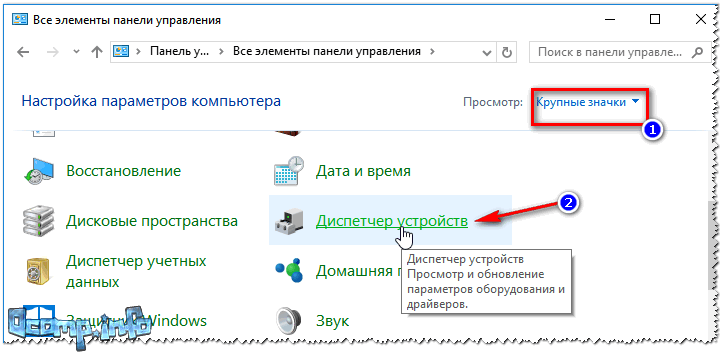
- Wireless Network Adapter;
- wireless network adapter;
- *** Wireless (clarification: any word, manufacturer’s brand, for example, next to the word Wireless).
The example below shows that the driver for the Wi-Fi adapter is installed ( note: Dell Wireless).
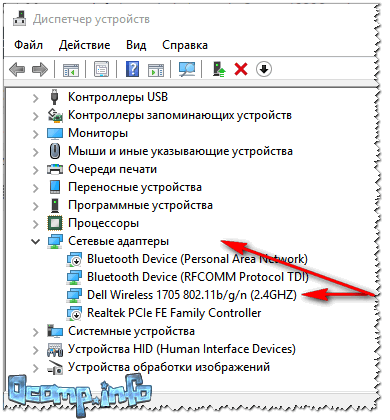
For comparison, I will give a screenshot below of what the device manager will look like if there is no driver for Wi-Fi. Please note that in the tab "Other devices" you will simply have it written "Unknown device" (line with yellow exclamation point). By the way, you may have several such lines - if several drivers for different devices are not installed at once.
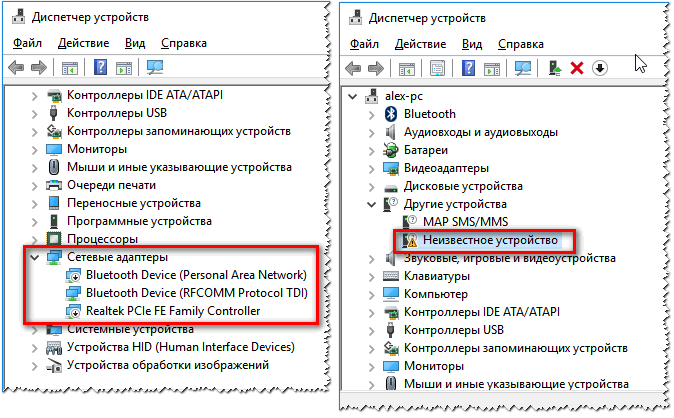
How to install/update the driver for the Wi-Fi adapter
Method No. 1 // in Windows without downloading additional software. software
In general, the ideal option is if you have a disk with all the drivers for your equipment (on laptops, drivers are often dumped onto the hard drive itself).
If there is no disk, then in some cases you can get by with “little loss”: to update the driver and you have Internet access, you just need to press 1-2 buttons in device manager !
Option #1: When you open the device manager, in top menu There is a button "Update hardware configuration" - click it! The fact is that Windows, when it “sees” equipment for which there is no driver, will try to update it on its own (very often - this method works...).
Option No. 2: Open the tab in Device Manager "Other devices" , then right-click on unknown device and select "Update drivers..." from the menu. Next select "Automatic driver updates" and follow the instructions of the wizard (see screenshot below).
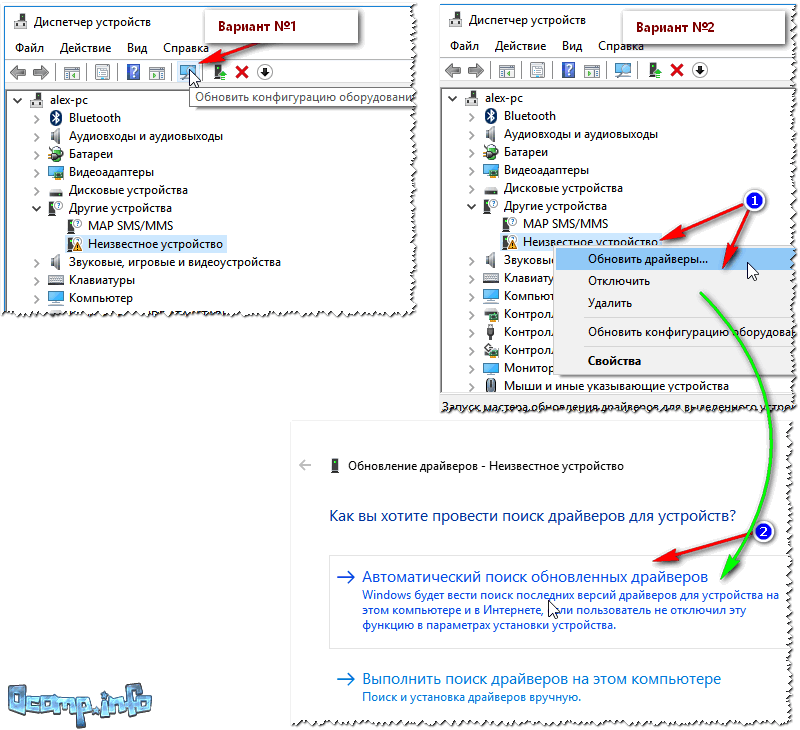
Method No. 2 - classic // if there is Internet
To find a driver for any equipment, you need to know the model of this equipment ( logical...). To find out what kind of Wi-Fi adapter you have installed, you can do it in two ways:
- find the documents that came with your device (we will not consider this path);
- use special utilities for determining PC characteristics (I talked about them here:). By the way, if you have a laptop, then you will need to know the model of your wireless adapter, even if you download the driver from the official website - the fact is that adapters from different manufacturers are often installed in the same laptop model. And when you go to the official website, you will immediately see 2-3 different drivers...
One of best programs viewing computer characteristics is AIDa 64 . In it, to find out the model of the Wi-Fi adapter, you need to open the tab "PCI/PnP network"(see the line where the Wireless Network Adapter will be, in the example below - this is the first line).
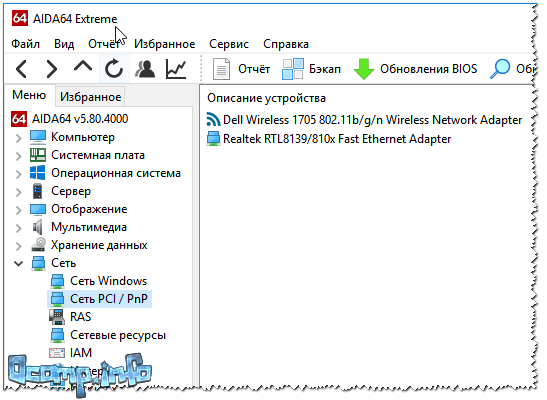

In general, the problem is solved...
Method number 3: how to update the driver if there is no Internet
Perhaps this is the worst option - there is no Internet, because there is no driver. To download the driver, you need the Internet. Vicious circle!

Not connected - no available connections// no driver for Wi-Fi
Of course, it won’t work without the Internet at all, but this problem also has a good option solutions (this option is suitable even if you do not know the model of your device).
There is such a wonderful program as 3DP Net(link to official website: ).
You can even download it using the Internet on your phone (it weighs about 100 MB, which is less than many drivers from official sites). The essence of the program is simple: it can install a driver for almost any network adapter (wired, wireless), and will give you access to the Internet (moreover, it does not need an Internet connection to work, you just need to download it once and run it). This is very convenient application, which is recommended to be kept on your emergency flash drive!
Actually, when you run it, it will automatically detect your adapter model and offer to update the driver - just click once on your network card(see screenshot below). Next, a wizard will launch that will install the driver for you in 3 steps (screenshots below).
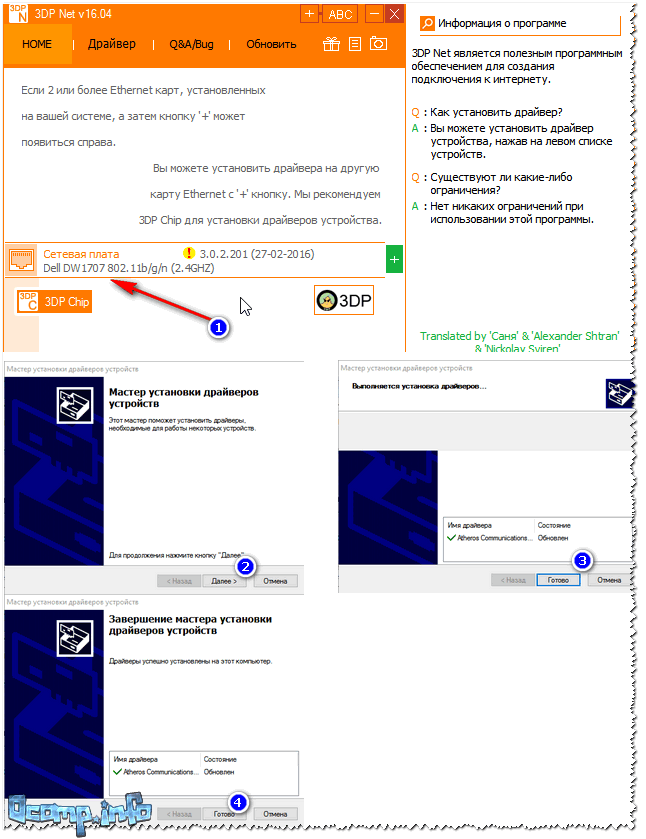
For those who were unable to update the driver, I recommend reading the article on updating drivers for an unfamiliar device -
Removing the old Wi-Fi driver
In some cases, install new driver for the wireless adapter it does not work until you remove the old one.
Important! Before you delete old driver- do it backup copy system (or make a backup of drivers). About how to do system backup, and then restore it - described in this article:
Method number 1 - through the device manager
To remove the driver in device manager, just find the desired device and open its properties ( double click left mouse button), then open the tab "Driver", and press the button "Delete"(see arrows 1, 2, 3 on the screenshot below).
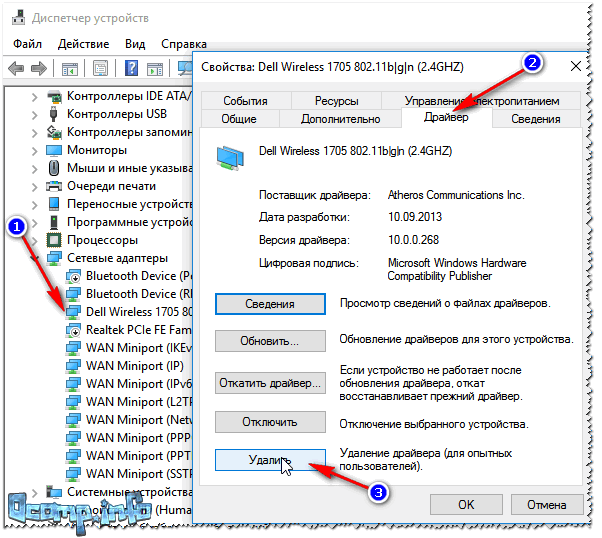
Method number 2 - through Driver Sweeper
There is a special utility for removing any drivers from the system - Driver Sweeper. You can learn how to use it from the article linked below.
By the way, the utility allows you to remove almost any driver in the system - be careful not to remove anything you need...
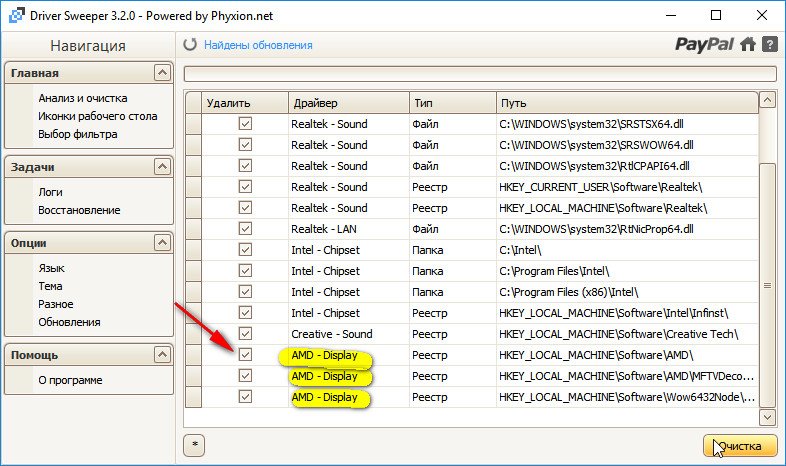
Selecting drivers to remove...
I’ll wrap it up here, good luck and peace of mind (often this is not enough when there are problems with “firewood” 😉)!
A Wi-Fi adapter is a device that transmits and receives information via wireless communication, so to speak, by air. IN modern world Such adapters in one form or another are found in almost all devices: phones, tablets, headphones, computer peripherals and many others. Naturally, special software is required for their correct and stable operation. In this article we will talk about where to find, how to download and install software for a Wi-Fi adapter on a computer or laptop.
In most cases, along with any computer device included installation disk with the necessary drivers. But what if you don’t have such a disk for one reason or another? We bring to your attention a number of methods, one of which will definitely help you solve the problem with installing software for a wireless network card.
Method 1: Device manufacturer's website
For owners of integrated wireless adapters
On laptops, as a rule, the wireless adapter is integrated into the motherboard. In some cases, you can find such motherboards for desktop computers. Therefore, you should first look for software for Wi-Fi boards on the manufacturer’s official website motherboard. Please note that in the case of laptops, the manufacturer and model of the laptop itself will be the same as the manufacturer and model of the motherboard.
- Find out the details of your motherboard. To do this, press the buttons together "Win" And "R" on keyboard. A window will open "Run". You need to enter the command into it "cmd" and press "Enter" on keyboard. This way we will open the command prompt.
- With its help, we find out the manufacturer and model of the motherboard. Enter the following values here one by one. After entering each line, press "Enter".
wmic baseboard get Manufacturer
wmic baseboard get product
In the first case, we find out the manufacturer of the board, and in the second, its model. As a result, you should get a similar picture.
- When we have found out the data we need, we go to the official website of the manufacturer. In this example we switch to .
- By going to the website of your motherboard manufacturer, you need to go to its home page find the search field. As a rule, next to such a field there is an icon in the form of a magnifying glass. In this field you must indicate the model of the motherboard that we found out earlier. After entering the model, click "Enter" or on the icon in the form of a magnifying glass.
- On next page All search results will be displayed. We look for your device in the list (if there is one, since we are entering the exact name) and click on the link in the form of its name.
- Now we are looking for a subsection with the name "Support" for your device. In some cases it may be called "Support". When you find one, click on its name.
- On the next page we find a subsection with drivers and software. As a rule, the title of such a section includes the words "Drivers" or "Drivers". IN in this case it's called .
- Before downloading the software, in some cases, you will be asked to select your operating system. Please note that sometimes to download software it is worth choosing an OS version lower than the one you have installed. For example, if a laptop was sold with installed Windows 7, then it is better to look for drivers in the appropriate section.
- As a result, you will see a list of all drivers for your device. For greater convenience, all programs are divided into categories by type of equipment. We need to find a section that contains a mention "Wireless". In this example it is called that way.
- Open this section and see a list of drivers available for you to download. Next to each software there is a description of the device itself, software version, release date and file size. Naturally, each item has its own button for downloading the selected software. It can be called something, or be in the form of an arrow or a floppy disk. It all depends on the manufacturer's website. In some cases there is a link that says "Download". In this case the link is called "Global". Click on your link.
- The files required for installation will begin downloading. It could be like installation file, and a whole archive. If this is an archive, then do not forget to extract all the contents of the archive into a separate folder before running the file.
- Run the file to start the installation. As a rule, it is called "Setup".
- If you already had the driver installed or the system itself detected it and installed the basic software, you will see a window with a choice of actions. You can either update the software by selecting the line "Update Driver", or install it completely by checking the box "Reinstall". In this case we choose "Reinstall" to remove previous components and install the original software. We recommend that you do the same. After selecting the installation type, press the button "Further".
- Now you need to wait a few minutes while the program installs the necessary drivers. This all happens in automatic mode. At the end, you will simply see a window indicating the end of the process. To complete, you just need to press the button "Ready".







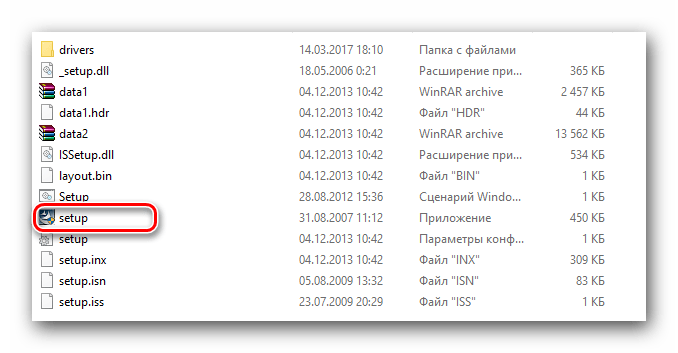
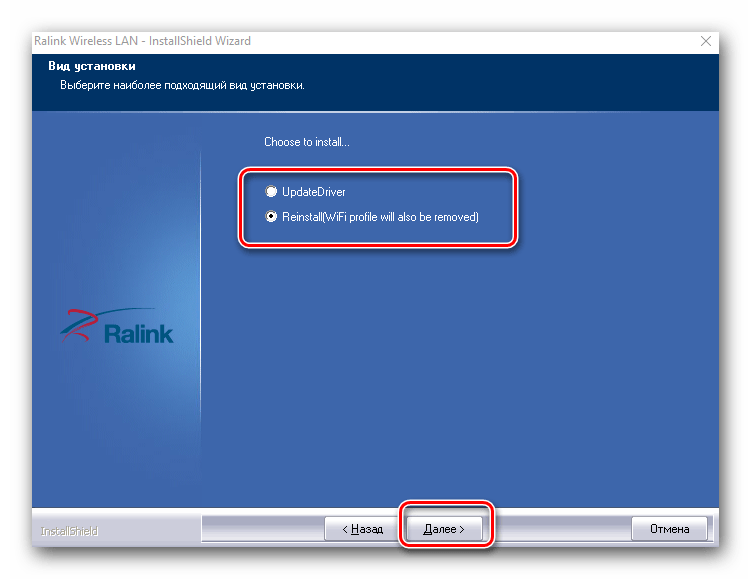
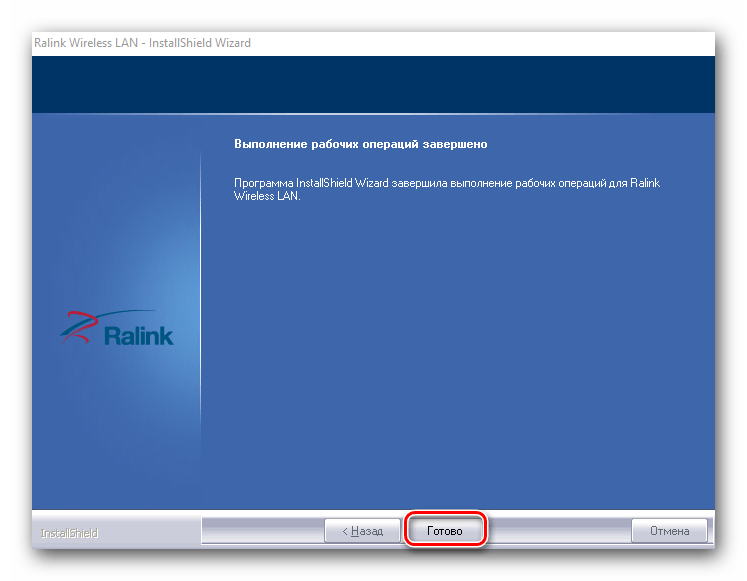
Once the installation is complete, we recommend restarting your computer, even though the system does not offer this. This completes the software installation process for integrated wireless adapters. If everything was done correctly, then you will see the corresponding Wi-Fi icon in the tray on the taskbar.
For owners of external Wi-Fi adapters
External wireless adapters are usually connected either via a PCI connector or via a USB port. The installation process for such adapters is no different from those described above. The process of determining the manufacturer looks somewhat different. In the case of external adapters, everything is even a little simpler. Usually the manufacturer and model of such adapters are indicated on the devices themselves or on their boxes. 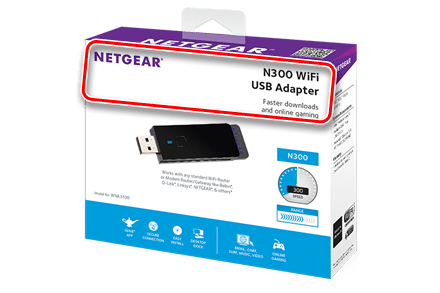
If you cannot determine this data, then you should use one of the methods presented below.
Method 2: Driver Update Utilities
To date, programs for automatic update drivers have become quite popular. Such utilities scan all your devices and identify outdated or missing software for them. They then download the necessary software and install it. We discussed representatives of such programs in a separate lesson.
In this case, we will install the software for the wireless adapter using the program. This is one of the utilities whose hardware and driver base exceeds the base popular program. By the way, if you still prefer to work with DriverPack Solution, you may find the tutorial on updating drivers using this utility useful.
Let's return to Driver Genius.

Method 3: Unique hardware identifier
We have a separate lesson for this method. You will find a link to it just below. The method itself is to find out the ID of the device for which the driver is required. Then you will need to indicate this identifier on special online services that specialize in searching for software. Let's find out the Wi-Fi adapter ID.
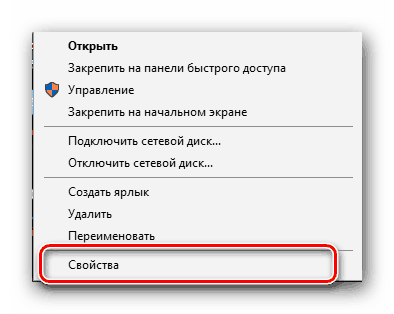
Once you have found out the ID, you need to use it on special online resources that will select a driver based on this ID. We described such resources and the complete process of searching for a device ID in a separate lesson.
Note that the described method in some cases is the most effective in finding software for a wireless adapter.
Method 4: Device Manager
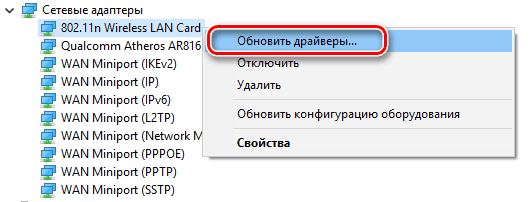
We hope that one of the options listed above will help you install drivers for your wireless adapter. We have repeatedly drawn attention to the fact that it is better to keep important programs and drivers always at hand. This case is no exception. You simply cannot use the methods described above without the Internet. And you won’t be able to access it without drivers for the Wi-Fi adapter if you don’t have alternative access to the network.
In the process of writing various articles on the topic Wi-Fi settings in Windows 7, many incomprehensible moments and questions arise specifically with the Wi-Fi adapter driver. For example, you write about connecting to wireless network, but the person does not find it at all computer Wi-Fi. The same thing happens when you try to distribute the Internet from a laptop; if the driver for the Wi-Fi adapter is not installed, then virtual network will not be able to launch. Many simply do not understand what to do next when the information from the article differs from what is happening on the monitor.
Look, there is a laptop, it should definitely have a built-in Wi-Fi adapter. Even take laptops that are already 5 years old or more, not to mention modern models. If you have desktop computer, and you want to connect to the Internet via a wireless network, then this can be done via a USB or PCI adapter. Windows 7 was installed on your laptop or desktop PC. The wizard or you yourself - it doesn’t matter. The main thing is that Windows 7 itself does not install the driver for the Wi-Fi adapter (I haven’t noticed such cases, Windows 10 already installs automatically). It turns out that if the technicians who installed the operating system for you did not install the driver for the Wireless adapter, then Wi-Fi will not work for you. And if the network cable is not connected to the laptop, then the connection status will most likely be like this:
In settings: Control Panel\Network and Internet\Network Connections you most likely won't see the adapter "Wireless network connection" , and in the device manager, on the network adapters tab, there will be only one adapter - LAN card. You won't find a wireless adapter there.
These are all signs that required driver not installed. The solution is very simple, install the wireless adapter driver yourself. Below, I will try to explain in detail, using an example, how to do this.
Windows 7: self installation Wi-Fi drivers
It doesn’t matter whether you have a laptop or a desktop PC with an adapter, the necessary driver may be on the disk that comes with the same laptop or adapter. As practice shows, such a disk may not be available with a laptop, but with an adapter, it most likely comes included. With Tp-Link adapters - definitely yes. So, you can try installing the driver from this disk. Just insert the disc into your computer drive and follow the instructions (usually a window asking you to install software will appear automatically).
We need a driver for the Wireless adapter. Therefore, the most The best way, this one is guided by the word “Wireless”, or “WLAN”. There may be something like Wireless Network Adapter and the like.
How to download the correct driver for a Wireless adapter from the Internet?
If there is no disk, or you cannot figure it out, then the necessary driver can be downloaded from the Internet. You may not be connected to the Internet, or Wi-Fi is not working. Don't forget that you can connect via network cable. Both through the router and directly from the provider. Or, you can download the driver on another device (even on a smartphone, tablet) and download it to your computer.
I can't show how to do this for all laptop manufacturers (maybe I’ll prepare such articles later): Lenovo, HP, Asus, Acer, etc. I’ll show you in detail using my laptop as an example Asus K56CM. The procedure will be the same for everyone. If you have a PC with a USB/PCI adapter, then you need to download the driver from the official website of the adapter manufacturer.
I recommend downloading drivers only from the official websites of manufacturers. Therefore, first of all, we need to go to the website of the manufacturer of our laptop (adapter). In my case, to the Asus website. You can just Google it. I type “Asus” in the search, and the first on the list is the official website. I think you will immediately understand this when you open the site. And if you know the site address, you can go directly.
Next, through a search on the site, or through the menu, we need to find the page with the model of our laptop. Or, find the section with driver downloads. As a rule, this is the "Support" menu item. In my case, with Asus laptop, I indicate the model in the search on the site Asus K56CM and select it in the search results.
I go to the tab Support - Drivers and utilities. I select my operating system from the list - Windows 7.
I search and open the Wireless tab, and download the driver for my adapter.
We save the file to the computer, preferably to the desktop, so as not to lose it.
It may be that you see several drivers for different adapters (different manufacturers)
. As in my case, there is a driver for "Intel" adapters, and "Atheros Wireless Lan Driver and Application". How can you find out which adapter is on your laptop? There is a small program for this called HWVendorDetection. Which you can download from this link. Download HWVendorDetection and just run it. The manufacturer of the Wireless LAN adapter will be indicated there. 
Installation process of the downloaded driver
And then everything is very simple. If you have the driver in the archive, as in my case, then just open the archive and run the installation file. Most likely this is the setup.exe file. Just follow the installation instructions. 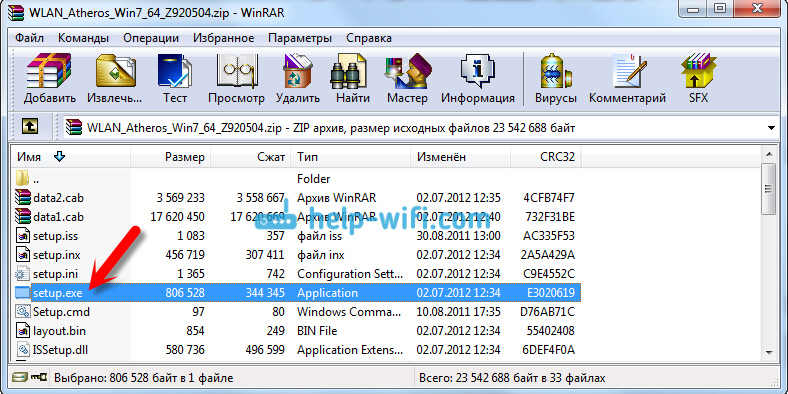
That's all, after installing the driver, it is advisable to restart the laptop, and you can connect to Wi-Fi.
Let me remind you that I showed the example of Asus laptops. Your process may be slightly different. If you can't find required driver, or you can’t install it, then write in the comments, I’ll try to advise. And one more thing, if you just want to update the driver to a newer one (reinstall), then I advise you to do everything according to these instructions. The manufacturer's website always has the latest drivers.
Corsair recently introduced a new extraordinary power supply called the AX1500i. The uniqueness of the model lies in its possession of the 80Plus Titanium certificate, thanks to its ultra-high efficiency. So, at a load of 10% the unit reaches 91.23% efficiency, at 20% - 92.63% efficiency, at half load - 94.04% efficiency, and at full load - 91.34% efficiency. Corsair promises to begin shipping the new product by the end of May at a recommended price of $449.99.
The Corsair AX1500i is powered by second-generation digital design that delivers unprecedented performance at 1,500 watts of power. This and...
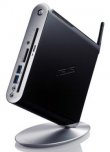 Asus, whose portfolio includes countless desktop and mobile PC solutions, presents its new creation: a mini-computer codenamed EeeBox PC EB1035. The model has dimensions of 219x29x172 mm and comes in a black case with a strict design. The new product will appeal to those users who want to save space on their desktop and at the same time get all the features of a traditional PC. The mini-computer can be mounted vertically on a special stand or attached to the back of a monitor (compatible with...
Asus, whose portfolio includes countless desktop and mobile PC solutions, presents its new creation: a mini-computer codenamed EeeBox PC EB1035. The model has dimensions of 219x29x172 mm and comes in a black case with a strict design. The new product will appeal to those users who want to save space on their desktop and at the same time get all the features of a traditional PC. The mini-computer can be mounted vertically on a special stand or attached to the back of a monitor (compatible with...
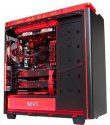 CyberpowerPC is preparing to release high-performance workstations from the Power Mega Pro series. The new products are based on AMD processors and Intel, which offer a minimum of 8 processing threads and a dual CPU configuration Intel Xeon The E6-2690 v2 offers up to 40 processing threads. Each version of the PC is equipped with premium components that can withstand the load of the most demanding applications, including video processing, 3D design and rendering programs.
CyberpowerPC is preparing to release high-performance workstations from the Power Mega Pro series. The new products are based on AMD processors and Intel, which offer a minimum of 8 processing threads and a dual CPU configuration Intel Xeon The E6-2690 v2 offers up to 40 processing threads. Each version of the PC is equipped with premium components that can withstand the load of the most demanding applications, including video processing, 3D design and rendering programs.
The manufacturer offers CyberpowerPC Power Mega Pro in a variety of design and component variations. ...
